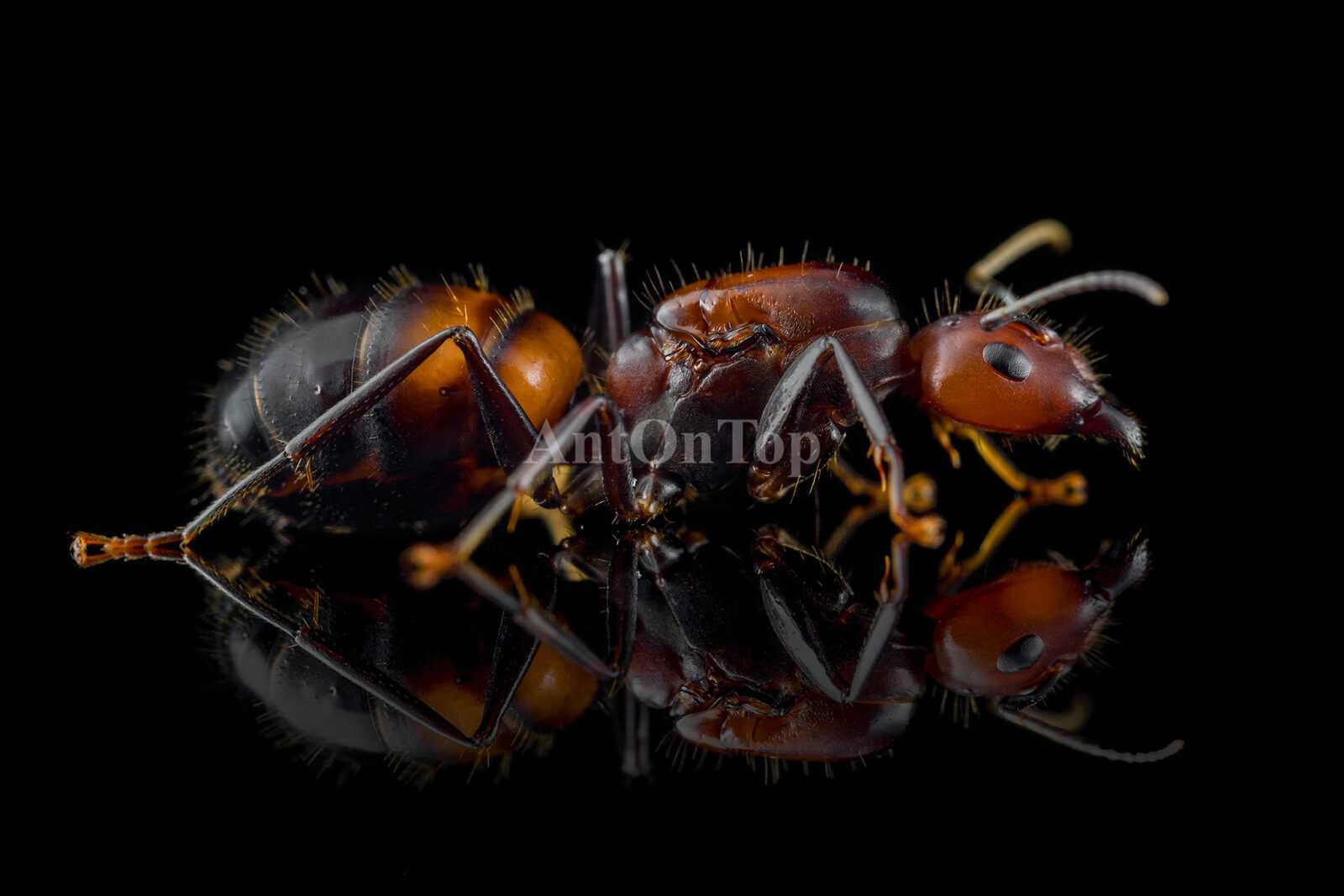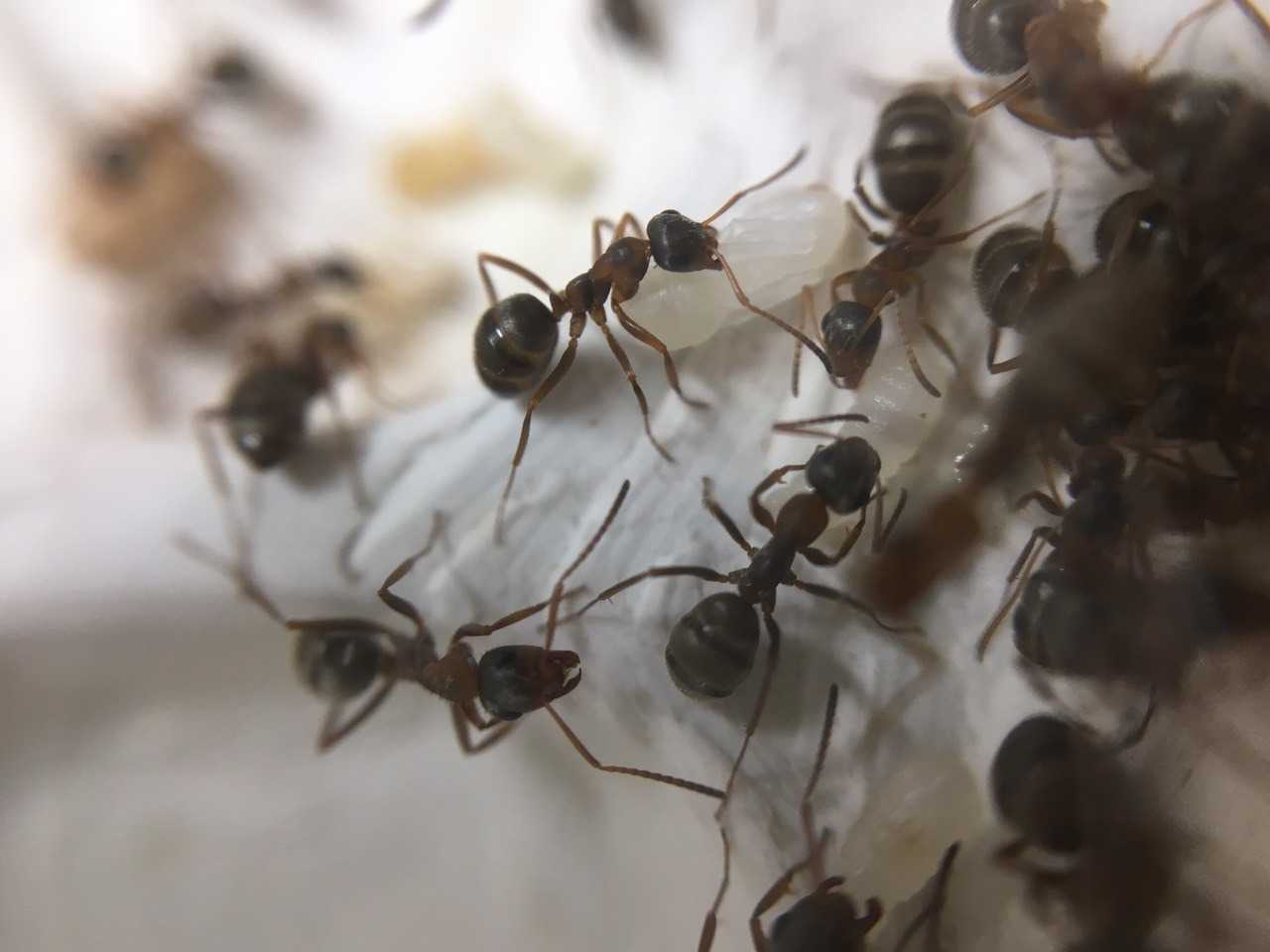
The most famous are the ants of the genus Messor, which have become really domestic.Most often on sale you can find two types - M. structor (painted black) and M. denticulatus (their front part is brown or orange). In nature, Messor live in arid areas that are not rich in wildlife - I do not understand Their other name - reapers - indicates the natural diet of these ants, it consists of the seeds of various steppe plants (and not only) they constitute a large part of the food everyday reapers. Insects, on the other hand, play a very small role. Every morning (and also in summer - every evening), hundreds of gatherers leave the Messor's anthill. Workers are looking for seeds that have fallen to the ground. The path of the Messor can stretch for tens of meters and the ants are constantly walking along their path, carrying grain or simply leaving the anthill looking for it. The reapers' nest has large round chambers filled with seeds almost to the ceiling - this is where the grain is stored and workers are constantly tinkering with it, preventing it from cracking and sprouting. - Some seeds are transferred to wetter conditions where they sprout. Soldiers - large ants working with a large head - clean the kernels from shells and scales by grinding them into flour with their huge chaps. This ready-made flour then feeds the rest of the ants.The main feature of reapers is polymorphism, but in fact, soldiers of this species usually do not fight anyone, their task is to grind the seeds. To set up a new colony, you need to lure a single mother, departing in May, in order to use a piece of pumpkin seed or a nut as an auxiliary measure, it is better not to give the syrup mass. When the first ants appear, you need to feed them with small seeds (it can be poppy seeds and mustard), and with the arrival of the soldiers, you can also give large seeds - they will handle it. Protein foods have a positive effect on the development of the colony - do not forget to feed Messoram with dead insects.Feeding - a mixture of cereals, seeds from wild plants, pieces of nuts, juicy fruits and vegetables, dead insects.

Species Camponotus
These are very different ants, both in appearance and behavior in nature.
Camponotus combines polymorphism - in one colony there are always small, slender workers and massive soldiers with a large head. Unlike reapers, they are true warriors, but in their youth they prefer to hang on the walls of the nest and act as "honey barrels" - living vaults of liquid food, into which workers carefully pour food into the soldiers. Mature soldiers help the workers hunt and cut the prey to pieces using their powerful jaws. They also protect the nest from enemies. And the workers' job is to build, search for food and take care of the brood. Camponotus vagus - large black ants, in whose colonies, as is usually the case with Camponotus, there are powerful aggressive soldiers. Even though the Vagus are very spectacular, we do not recommend that you start your first breeding for novices with them. The fact is that all local Camps require severe wintering for which you need to prepare. Sometimes the seasonal rhythm gets mixed up and the Vagus can go into diapause in the summer. when it is even more difficult to ensure a gentle temperature drop.
There is a valuable alternative to the European Camps - their tropical counterparts: Camponotus nicobarensis and Camponotus parius. Both species come from the forests of Southeast Asia. For the device of the sockets, they choose more or less suitable places - from empty coconuts to garden hoses. They also have large soldiers in the colonies, and the ants themselves have a beautiful color.
Feeding - Young colonies mainly feed on dead insects, while mature colonies can hunt live insects. Both of these species are unpretentious (as in fact all the ants we have included in this selection) to be kept at home, but for proper development they must be fed with insects at an elevated temperature (25-28 degrees Celsius).

Ants species Lasius
They are familiar to all of us because they are most common in parks, gardens and the city.
Finding the mother of these ants in the summer (June-July) is not difficult. Mother Lasius is distinguished by a thick belly in which food supplies are stored, even carefully delivered to the hill of ants (queens are fed intensively before summer) so that they can establish their own colony. The female meets the male in the air, after fertilization, sheds its wings and the male as well, then looks for a relatively shallow burrow in the ground where it begins to lay eggs. The larvae are fed by the secretions of the salivary glands from the reproductive organs of the mother ant. they leave eggs (the body's resources - abdominal fat and wing muscles) they leave for the production of nutrients - I don't understand. The larvae grow, pupate, and the first little ants emerge from the cocoons, ready to come to the surface, get food and help "at home". All the functions, the life of the ants and the events in the "house" will take place in exactly the same way as in the wild, with the only difference that the mother will live in an incubator tube instead of an underground burrow. We put the female Lasius in a dark, quiet and peaceful place, gave her a drop of syrup. Then the initial colony develops on its own, and our job is to spot when the working ants have arrived to start feeding them with syrup and insects. The Lasius colony grows quickly, it does not require special conditions.
Formicarium - can be any, except wooden.
Feeding - honey or sugar syrup, alive and dead food insects, juicy sweet fruit.

Species Formica
Species Formica includes the average size of ants that are quite common in our forests (at the edge of the forest) and in meadows.
They are fast, mobile, love to dig anthills in places heated by the sun. Some species have a bright contrasting color (orange - upper body "breast", black head and abdomen). Serviformic colonies are not very large (usually several thousand individuals). All the ants in these families look the same, but sometimes there are unique individuals of larger sizes (they are not soldiers, they just fed the larvae well in the formicarium scene). Serviformica are quite calm when meeting other ants, preferring to avoid conflicts. This attitude makes these ants an ideal target for all kinds of social parasites and slave owners who create their own based on their colonies and use workers for slave labor. These ants hunt well by using acid to kill insects, but prefer to pick up dead insects or parts of them. They use flower nectar, release of aphids and fruit juices as a source of carbohydrates. The ants fly from the end of June to the beginning of August, the mother sets up a colony on her own. They easily take root in the "new home", are unpretentious, but have one significant drawback - overwintering. The colony may stop growing, it should be fed with syrup, transferred to a test tube or left in the formicarium. Then it is worth putting them in the refrigerator or in a place with low temperature. They can spend the winter period in a low temperature (in the basement, refrigerator), you can put the temperature at room temperature - in spring development will resume.
Formicarium - plaster, acrylic. Feeding - live and dead insects, sugar or honey syrup, fruit.

So we took into account several groups of ants, each of them will suit even novices. However, some species are even simpler and do not require as much attention as others.
Messor structor is undoubtedly our favorite species. This is the species from which breeders usually start their hobbies. They can even be left unattended for long periods of time - just leave more seeds and moisten the formicarium well, and the ants will slowly use their supplies to eat. Polymorphism and unpretentiousness - this is what allows the Messors to be popular for many years.
So if you can't decide on the type of ants - go ahead and order the reapers, they won't let you down!




